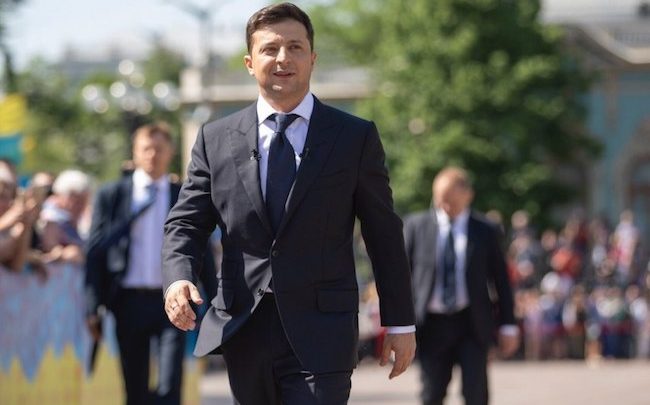
The Ukrainian conflict would have meant a return to the Cold War between Russia and the US and a return to the Doctrine of Containment, the basis of which was set out by George F. Kennan in his essay “The Sources of Soviet Behaviour”, published in Foreign Affairs magazine in 1947, and whose main ideas are summed up in the quote “Soviet power is impervious to the logic of reason but very sensitive to the logic of force”.
This would include Finland’s entry into NATO’s military structures and the increase in military forces with four new battalions deployed on the European border with Russia and Russia’s response with the installation in Belarus of Iskander-M missiles equipped with multi-purpose warheads as well as S-400 anti-aircraft missiles following the Cold War dynamic (action-reaction).
We are also witnessing the fifth phase of the deployment of the missile defence shield in Europe (Euro DAM), which began in May 2016 when the Aegis Ashore anti-ballistic defence system went into service at the Deveselu base in Romania, just 600 km from the Crimean peninsula. For its part, Russia is said to have installed Iskander M missiles with multi-purpose warheads and S-400 anti-aircraft missiles in Kaliningrad, which, in the words of political scientist Vladimir Abramov, would mean that “Kaliningrad province will once again play the role of a gun in the temple of Europe as it did two decades ago”.
Moreover, if NATO closes the exit of the Soviet enclave of Kaliningrad to the Baltic Sea, the Kennedy-Khrushchev Missile Crisis (October 1962) with Kaliningrad as its epicentre could be repeated. In this context, Putin, in a message to the Federal Assembly, warned that “Russia could also use the hypersonic Tsirkon missile, which with a speed of Mach 8 and launched from submarines could reach any US Command Centre in five minutes, as well as the Burevestnik cruise missile and the nuclear submarine drone Poseidon”.
Will Zelensky be the collateral victim of the new US scenario?
As for the US, the Democrats’ loss of control of Congress after the mid-term elections in November will mean that Republicans will scrutinise future arms aid to Ukraine, estimated to date at $71 billion and in effect until June, and increase the thorough tracking of such weapons to prevent them from entering the arms black market, as well as a growing wave of political disaffection with Zelensky that will span the entire US political spectrum. Thus, the Democratic candidate Robert F. Kennedy Jr., in an interview in the “New Statesman” stated that “the US is sending 113 billion dollars to Ukraine when a quarter of American citizens go to bed hungry”.
On the other hand, Republican candidate and former president Donald Trump claimed on his networks that “we have never been so close to World War III” and that there must be a “total commitment to dismantle the globalist neoconservative power group responsible for dragging the world into endless wars”. Similarly, Republican candidate Ron Desantis said that “Washington has many vital national interests, but further entangling itself in the territorial dispute between Ukraine and Russia is not one of them”.
Consequently, a Republican victory in 2024 would represent the end of the Atlanticist strategy of Biden and Soros, who are determined to oust Putin from power, the signing of a peace agreement in Ukraine and a return to the Doctrine of Peaceful Coexistence with Russia. This would entail the enthronement of the G-3 (US, Russia and China) as “primus inter pares” in global governance and the end of the obsessive dream of the globalists led by Soros and the Open Society Foundation (OSF) to achieve the balkanisation of Russia, “the white whale that Soros has been trying to hunt for decades”.
In the Democratic camp, signs of Biden’s senility, runaway inflation and the economy’s possible entry into recession in the coming year would have sunk the Democratic leader’s popularity to 30 per cent, which could facilitate Donald Trump’s triumphant return in the 2024 presidential election. However, Biden has an ace up his sleeve, given that US strategic reserves are at an all-time high and the Chinese colossus represents a growing challenge to US economic-military hegemony, following the failure of the CIA-directed colour revolution against the Iranian government known as the ‘Islamic Veil Revolt’, Biden would use an initial Israeli surprise attack on Iran to launch a new war in the Middle East with the dual aim of drying up China’s energy sources and boosting his popularity ahead of the 2024 presidential election.
Thus, the new conflict in the Middle East will absorb the entire US military budget in the next three years, which could speed up the personal meeting between Biden and Putin that would lead to a peace agreement between Ukraine and Russia by the end of 2023 that would put an end to the Ukrainian dispute, already considered by the US to be a drag due to the unbearable expense it entails.
For his part, Putin is seeking a peace agreement stating that Ukraine will not join NATO and that the Ukrainian dispute will be settled by dividing Ukraine into two halves, with the east of the country, including Crimea, the Donbas, Zaporiyia and Kherson, remaining under Russian control while the centre and west of today’s Ukraine will be under Polish control, Putin will gain full control of the Sea of Azov and Ukraine will secure its exit to the Black Sea, while the imaginary line linking Kharkov, Zaporiyia, Bakhmut and Rubizhne will become the new Berlin Wall of Cold War 2. 0. This agreement will try to be torpedoed by the plot led by Zelensky, Poland and the Baltic States to involve NATO in the Ukrainian conflict, which will make the illustrious Zelensky a burden for the US that it is advisable to get rid of immediately, and it is not out of the question that he will be accused of corruption and forced to go into exile in the US.




